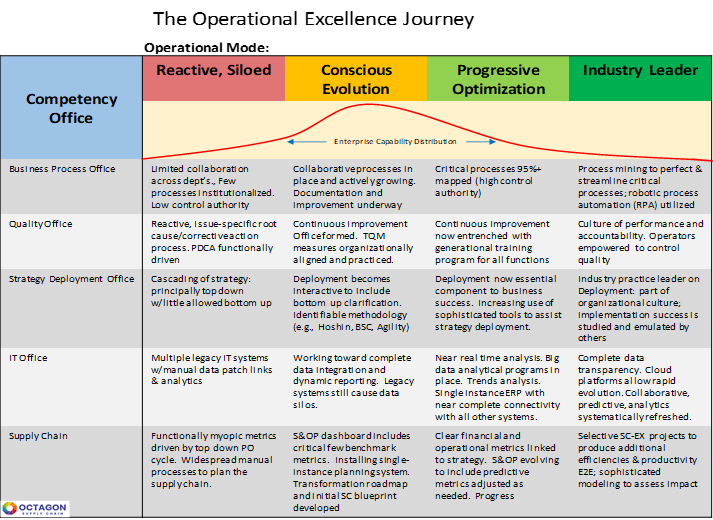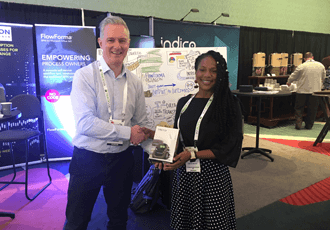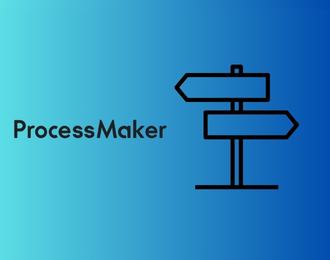∗ Co-written by Clifford Lee, Vice President Octagon Supply Chain and Shay O'Connor, Senior Vice President of Sales.
Last week we had the pleasure of attending the 20th Annual OPEX Week: Business Transformation World Summit 2019, which took place in Orlando, Florida.
During my three days there, we had the privilege to chat and connect with delegates from around the world representing a number of different industries.
For those of you who may not be familiar with this event, OPEX Week continues to be the leading event for business transformation executives from across the globe, with over 150 senior leaders taking to the stage throughout the week, giving attendees an insight into the future of business and process excellence.
Our Discussion
As sponsors of the event, FlowForma and Octagon Supply Chain hosted roundtables together to discuss process automation and digital transformation and we thought we would share with you our experiences and conversations.
The theme for our discussion was based around 'how to develop the strategic bridge between process and technology improvement to power future growth'. As you will see in the below info-graphic (fig. 1) we discussed four key areas of required outcomes and activities:
- Process Coherency
Enterprises must develop the proper outcome-based measures that allow for critical processes to be identified, documented, aligned, improved, and harmonized with other critical processes in order to ensure best use of technologies at hand. - Data Transparency
Most research house surveys have shown that barely 10% of all companies have both the data and insights needed to achieve their desired business outcomes. The ability of an enterprise to remove data silos and connect metadata E2E into analytics and performance dashboard metrics is directly related to competitiveness in the marketplace and earnings. - Data Integrity
A system has to be in place to assure validated data is entered and used in an IT system. Minimizing ‘pass-back’ of documents between steps in a workflow for validation is key to avoiding work duplication and organizational churn, not to mention improving the effectiveness of real-time decision-making. - Connecting to Financial Success
Key to success for any enterprise is the ability to connect measurable financial outcomes with process and technology improvements.
.jpg?width=700&name=OPEX%20Week%2019%20Process%20and%20Technology%20Improvement%20-%20Infographic%20with%20FlowForma%20and%20Octagon%20(1).jpg)
Fig. 1: Develop the Strategic Bridge Between Process & Technology Improvement to Power Future Growth infographic by artist Kimberly Dornisch
Challenges
Here we have highlighted the challenges identified by participants at our roundtable discussion and have provided a context to challenges within the OPEX Journey Chart, allowing everyone to see how the challenges stack up against OPEX maturity stages.
Process Coherency Participant Challenges
- ‘Tribal knowledge’, aka shop floor rules with no organizational documentation and limited cross-training of process and procedures. In other words, no standard work exists and the situation is described as ‘low process control authority’. This challenge is particularly damaging during times of high organizational turnover.
- Process governance can be very challenging when products/services are tightly regulated by state, federal, and other country regulations. A central query-based depository is a must in this situation.
- Process digitization and automation is rare, even where documentation has been accomplished. This greatly hampers an organization’s ability to adapt quickly to change.
Data Transparency Participant Challenges:
- Most participants were from companies that have grown up with a myriad of legacy systems, many of which generate data outputs which require translation routines in order to be useful inputs to other legacy systems.
- Most participants do not have single-instance ERP systems. Rather, either a patchwork of legacy systems tied together with spreadsheets or several main systems exist (5+) that are tied together via a Data-Link technology in the attempt to achieve data transparency. The agreed upon disadvantage to multiple systems is that it is time-consuming and costly to upgrade.
- Large, main-frame driven systems that are not cloud-based are very time-consuming and expensive to evolve. This presents a nearly impossible financial hurdle to organizations.
Data Integrity Participant Challenges:
- Most participants agreed that a lack of data governance rules for general business data present the biggest challenge. This is not the case, however, for personally identifiable information (PII) data, which are highly regulated and have required security protocol for its maintenance.
- Legacy systems and their data accuracy upkeep is notorious for being time-consuming in this space. As legacy systems become less used and invested in, the higher the inaccuracy of the information.
- Master data within ERP systems usually have problems with accuracy if responsibilities are not well established within an organization on who can alter this data. Organizational turnover and restructuring were also pointed to as a leading cause of master data accuracy deficiencies.
Connecting to Financial Success Challenges:
- Metrics are not outcome-based; they are instead output-based and rarely cross-functional, as they are mostly developed within siloed functions which are intent to improve and optimize their own efficiencies, perhaps at the expense of other functions.
- The conversation begins with leadership and flows to product managers. What has been experienced among roundtable participants is that only high level financial and operations performance metrics are present in their businesses. None of the companies present had causal/diagnostic metrics in place that serve as leading indicators to pending business change.
Conclusions
The round table observations relate directly to the OPEX Journey grid shown below. This version of the journey is contributed by Octagon Supply Chain via their blog and social network posts.
The population spread within the roundtable discussion also conforms to the overall enterprise population maturity distribution noted at the top of the graphic. Take a look and see where your company currently lies on this journey.

Fig. 2: The Operational Excellence Journey as per Octagon Supply Chain (image: Octagon Supply Chain)
Options
Octagon Supply Chain and FlowForma's joint service offering (JSO) allows companies who work with Microsoft Office 365® to rapidly accelerate progress in their OPEX Journey by efficiently utilizing a company’s existing infrastructure to accomplish:
1. identifying the critically few processes required to achieve specific business outcomes
2. ensuring these processes are coherent with each other
3. establishing the correct measurements to ensure that progress is tightly connected to the right financial outcomes
4. automating both processes and metrics within the appropriate corporate offices to ensure ongoing success
Additionally, once these steps are achieved, most of our clients push to establish a series of critical leading indicator metrics, which are comprised of causal, diagnostic, and multi-order metric sets within a corporate dashboard. This type of dashboard crucially comprises the “Agility Dashboard.”
Octagon and FlowForma’s JSO is unique in its scope, efficiency of deployment, and cost-effectiveness. If you would like to find out more please leave a comment below. We would be delighted to help you and your organization on its journey to excellence.
Finally, a massive congratulations to our prize winner during the conference, Karilyn (pictured with Shay O'Connor, Senior Vice President of Sales, FlowForma above) who went home with Vector the mini AI robot, enjoy!
.png) By
By 





